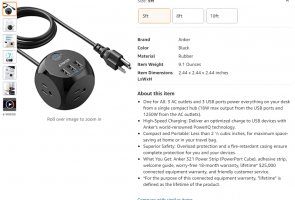Yikes
SAWHORSE
Please help me understand NEC 400. I have a client that owns a historic hotel, and they want to add power outlets in the lobby walls and columns so that guests can power their mobile phones, laptops, etc. The walls and columns have historic decoration on them, such that the outlets can only be installed within the baseboard at about 9" AFF, whereas ADA requires 15" AFF minimum.
There are lounge chairs and cocktail tables near the outlets, and I would like to propose a tabletop power extension +USB "power port", similar to the image below, which has a 5' long power cord and overload protection. Does this - - or something like this - - meet code for a commercial hotel lobby?

There are lounge chairs and cocktail tables near the outlets, and I would like to propose a tabletop power extension +USB "power port", similar to the image below, which has a 5' long power cord and overload protection. Does this - - or something like this - - meet code for a commercial hotel lobby?

Last edited:
